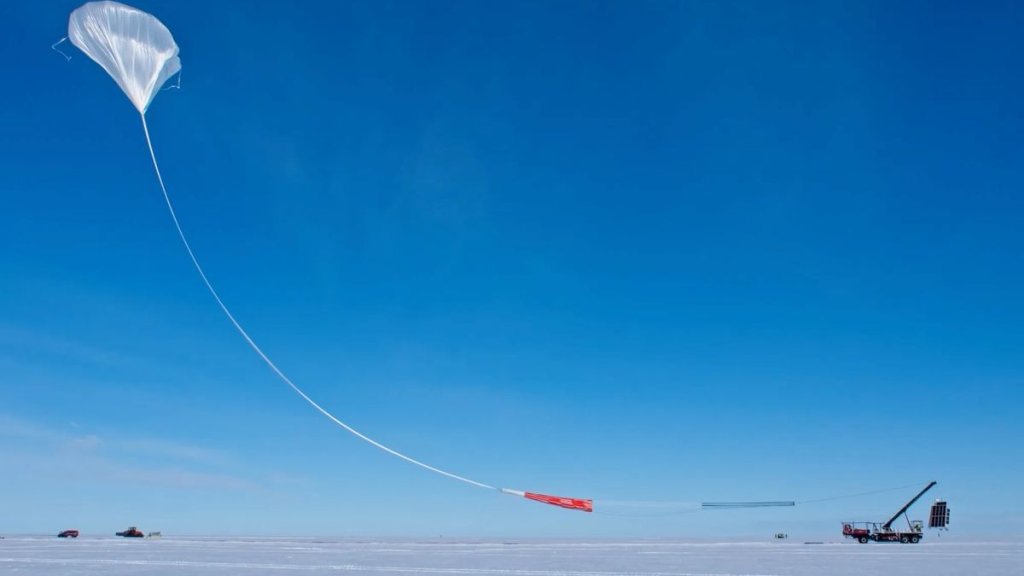A NASA scientific balloon mission just set a new agency record, spending 57 days floating in the skies above the South Pole.
The mission, called the Galactic/Extragalactic ULDB Spectroscopic Terahertz Observatory (GUSTO), launched a gargantuan scientific balloon from McMurdo Station in Antarctica on Dec. 31. The balloon stayed aloft for a total of 57 days, 7 hours and 38 minutes, representing the longest flight of any NASA heavy-lift, long-duration balloon mission, according to a statement from the space agency.
GUSTO included a telescope tethered to a stadium-sized, zero-pressure scientific balloon that soared to altitudes above 125,000 feet (38,100 meters). The mission, initially scheduled to run for just over 60 days, was aimed at mapping a large part of the Milky Way galaxy, including the galactic center, along with the nearby satellite galaxy the Large Magellanic Cloud.
Related: World View captures spectacular sunrise with high-altitude balloon (video)
“NASA’s Long Duration Balloon program provides researchers the ability to fly state-of-the art payloads at the very edge of space, affording them the opportunity to make groundbreaking observations of the cosmos more frequently and at a significantly lower cost than conventional orbital missions,” Christopher Walker, who led the mission, said in the statement.
The telescope measured carbon, oxygen and nitrogen emissions from the material between stars to help scientists better understand the lifecycle of interstellar gas in the Milky Way. Favorable winds in the stratosphere paired with ample solar power provided by the austral summer in the polar region enabled GUSTO to claim the NASA duration record previously held by the Super Trans-Iron Galactic Element Recorder (SuperTIGER) balloon mission, which launched in December 2012 and stayed up for more than 55 days.
“The success of this balloon mission is a fantastic tribute to all the people that support the program,” Andrew Hamilton, acting chief of NASA’s Balloon Program Office at the agency’s Wallops Flight Facility in Virginia, said in the statement.
“From the operations team at Peraton, to our balloon manufacturer at Aerostar, to the U.S. National Science Foundation and their support staff in Antarctica, and to the Mission Management team with NASA, every one of them has been vital to the success of this mission, which absolutely demonstrates the capability and value of Long Duration Ballooning to the scientific community,” Hamilton said.
The GUSTO mission officially ended on Feb. 26 at 6:24 p.m. EST (2324 GMT), when the balloon and observatory descended by parachute and landed safely on the ground in Antarctica.

